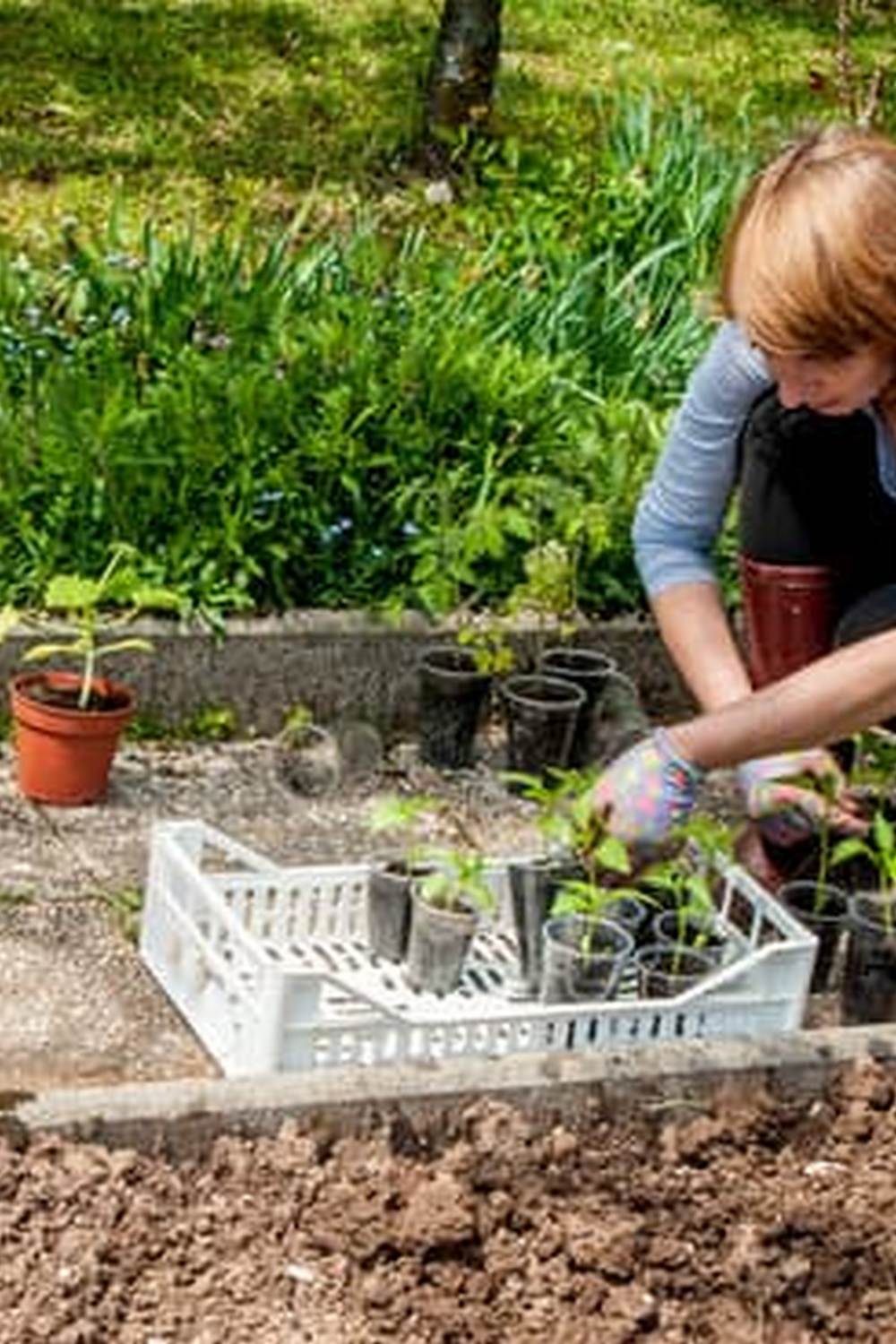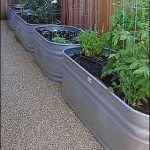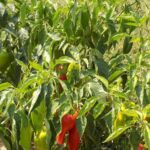Are you ready to start your vegetable garden for the upcoming year? With the Vegetable Gardening Calendar 2022, you can effectively plan and organize your garden for a successful harvest. By following a structured calendar tailored to your planting zone, you can maximize productivity and ensure a bountiful supply of fresh vegetables throughout the year.
Planning your vegetable garden in advance is essential for achieving a thriving garden. Having a clear outline of what to plant each month, understanding your planting zone, preparing the soil properly, and implementing pest management strategies are key components in the planning process. By utilizing the Vegetable Gardening Calendar 2022, you can stay on track and efficiently manage your garden tasks.
The benefits of following a vegetable gardening calendar are numerous. Not only does it help you stay organized and efficient in your gardening efforts, but it also enables you to take full advantage of each growing season. With detailed guidelines on planting schedules, soil preparation tips, pest management strategies, and harvesting techniques, this calendar serves as a valuable tool for both novice and experienced gardeners alike.
Benefits of Following a Vegetable Gardening Calendar
Following a vegetable gardening calendar in 2022 can provide numerous benefits for gardeners of all levels. One of the main advantages is that it helps you stay organized and on track with your planting schedule. By knowing when to plant specific vegetables each month, you can optimize your garden space and ensure a continuous harvest throughout the year. This level of planning not only maximizes yield but also minimizes waste.
Another benefit of following a vegetable gardening calendar is the ability to stagger plantings for a more extended harvest period. By spreading out your plantings according to the recommended schedule, you can enjoy a steady supply of fresh produce over several weeks or months. This not only ensures a variety of vegetables for your meals but also reduces the risk of overwhelming amounts at once, allowing you to make the most of your harvest.
Moreover, utilizing a vegetable gardening calendar can help you rotate crops efficiently. Crop rotation is essential for maintaining soil health and preventing pest and disease build-up in your garden. By following a planting schedule that takes crop rotation into account, you can decrease the likelihood of issues arising due to planting the same types of vegetables in the same spot season after season.
| Benefits | Explanation |
|---|---|
| Organization and Optimization | Stay organized with planting schedules for continuous harvest |
| Extended Harvest Period | Staggered plantings for steady supply over weeks or months |
| Crop Rotation Efficiency | Prevent soil depletion and pest buildup by rotating crops effectively |
Overview of Different Vegetables to Plant Each Month
Planting the right vegetables at the right time is crucial for a successful harvest in your vegetable garden. Following a structured vegetable gardening calendar can help you stay organized and maximize the productivity of your garden throughout the year. In a vegetable gardening calendar 2022, each month typically has specific recommendations on what vegetables to plant based on your planting zone and local climate conditions.
For example, in January and February, cold-hardy vegetables like kale, spinach, and carrots are excellent choices for early spring harvests. As the temperatures start to warm up in March and April, you can start planting peas, lettuce, radishes, and beets. May and June are ideal for warm-season crops such as tomatoes, peppers, zucchini, and cucumbers. Transitioning into the summer months of July and August, you can continue planting heat-loving vegetables like corn, beans, squash, and eggplant.
As you move into September and October when temperatures start to cool down again, consider planting fall crops such as broccoli, cauliflower, Brussels sprouts, and cabbage. Finally, in November and December as winter approaches in some regions, focus on planting cover crops like winter rye or preparing your garden beds for the next growing season.
By aligning your vegetable planting schedule with a well-crafted vegetable gardening calendar 2022 specific to your area’s climate conditions, you can ensure a bountiful harvest year-round.
| Month | Recommended Vegetables |
|---|---|
| January-February | Kale, spinach, carrots |
| March-April | Peas, lettuce, radishes |
| May-June | Tomatoes, peppers,zucchini,cucumbers |
Importance of Understanding Your Planting Zone
Understanding your planting zone is crucial for successful vegetable gardening in 2022. Planting zones are determined based on climate conditions such as average minimum temperatures, which help gardeners determine what plants will thrive in their specific region. By knowing your planting zone, you can select appropriate vegetable varieties that are more likely to grow well and produce a bountiful harvest.
To make the most out of your vegetable garden in 2022, consider the following key points related to understanding your planting zone:
- Research Your Planting Zone: Use online resources or consult local gardening centers to identify your specific planting zone. This information will guide you in selecting suitable vegetables for optimal growth.
- Choose Vegetables Accordingly: Different vegetables have different temperature and sunlight requirements. Knowing your planting zone will help you choose vegetables that are best suited for the conditions in your area.
- Consider Frost Dates: Understanding the last frost date in spring and first frost date in fall for your planting zone is essential for planning when to start seeds indoors or directly sow them outdoors.
Incorporating knowledge of your planting zone into your vegetable gardening calendar for 2022 will enhance the productivity and success of your garden. Adjusting planting dates, selecting appropriate varieties, and implementing proper care techniques based on your specific planting zone will contribute to a thriving vegetable garden throughout the year. By working with the natural conditions of your area, you can maximize the potential of your garden and enjoy a rich harvest of fresh, homegrown produce.
Tips for Soil Preparation and Maintenance Throughout the Year
When it comes to successful vegetable gardening, proper soil preparation and maintenance are essential components. By taking proactive steps to ensure your soil is healthy and well-nourished, you can set yourself up for a bountiful harvest throughout the year. In this section, we will explore some key tips for soil preparation and maintenance to help you achieve gardening success in 2022.
Testing Your Soil
One of the first steps in soil preparation is to test the quality of your soil. By conducting a simple soil test, you can determine the pH levels, nutrient content, and texture of your soil. This information will help you make informed decisions about what amendments may be necessary to improve the health of your soil. Testing your soil at least once a year, preferably before each planting season, is recommended to ensure optimal growing conditions for your vegetables.
Adding Organic Matter
To improve the structure and fertility of your soil, consider adding organic matter such as compost, aged manure, or leaf mulch. These materials can help enhance drainage, increase water retention, and provide essential nutrients for plant growth. Incorporating organic matter into your soil throughout the year will help build up its health over time and support healthier plant development.
Regular Maintenance Practices
In addition to initial soil preparation, ongoing maintenance practices are important for sustaining healthy soil conditions. This may include regular weeding to reduce competition for nutrients, mulching to retain moisture and suppress weeds, and rotating crops to prevent depletion of specific nutrients in the soil. By staying proactive with these maintenance tasks throughout the year, you can create an environment that supports robust plant growth and productivity in your vegetable garden in 2022.
Pest and Disease Management Strategies for a Healthy Garden
Maintaining a healthy vegetable garden in 2022 involves more than just planting and watering your crops. One of the key aspects of successful gardening is managing pests and diseases that can threaten your plants. By implementing effective pest and disease management strategies, you can ensure that your garden thrives throughout the year.
One important step in pest and disease management is to regularly inspect your plants for any signs of infestation or illness. Early detection is crucial in preventing the spread of pests and diseases, so be sure to monitor your garden closely. Look for common symptoms such as yellowing leaves, holes in foliage, or an unusual sticky substance on plant surfaces. By identifying issues early on, you can take action promptly to protect your crops.
Another essential aspect of pest and disease management is practicing good garden hygiene. Keep your garden clean by removing any debris or dead plant material that could harbor pests or disease pathogens. Proper spacing between plants can also help improve air circulation, reducing the likelihood of fungal infections. Consider rotating your crops each year to disrupt pest cycles and minimize the risk of recurring issues in your garden.
Implementing organic pest control methods can also help protect your vegetables without harmful chemicals. Companion planting, using insect-repelling plants like marigolds, and introducing beneficial insects like ladybugs can all help control pest populations naturally. Additionally, natural sprays like neem oil or homemade remedies using ingredients like garlic and pepper can deter pests effectively. By incorporating these strategies into your vegetable gardening calendar for 2022, you can maintain a healthy garden without resorting to harsh pesticides.
How to Harvest and Store Your Vegetables for Maximum Freshness
Once you have diligently planned and tended to your vegetable garden following a vegetable gardening calendar 2022, the rewarding moment of harvest arrives. Properly harvesting and storing your vegetables can ensure that you get to enjoy the fruits of your labor at their peak freshness. Here are some tips on how to harvest and store your vegetables for maximum freshness:
Harvesting Techniques
Each vegetable has its own specific harvesting requirements. For example, tomatoes should be picked when they are fully colored and slightly firm but still give to gentle pressure. On the other hand, leafy greens like lettuce should be harvested by cutting them about an inch above the soil line. Be sure to research the best practices for each vegetable in your garden to ensure optimal flavor and texture.
Storing Guidelines
Proper storage is key to preserving the freshness of your harvested vegetables. Some vegetables like onions and garlic thrive in cool, dark places with good air circulation, while others like peppers and cucumbers do better when stored in the refrigerator. Consider investing in storage containers specifically designed for keeping produce fresh or use traditional methods such as root cellars or canning.
Prolonging Freshness
To extend the shelf life of your vegetables, it’s essential to handle them with care. Avoid washing vegetables until right before use as moisture can lead to premature spoilage. Additionally, remove any damaged or overripe produce from your storage area promptly to prevent mold or rot from spreading to other items. With proper handling and storage techniques, you can savor the taste of your homegrown vegetables well beyond their harvest date.
By mastering the art of harvesting and storing your vegetables properly, you can maximize their freshness and enjoy a bountiful supply throughout the year. Taking care to follow these guidelines will not only enhance the flavor of your produce but also reduce food waste in your household. So take pride in your gardening efforts by making sure that each bite of your homegrown veggies is bursting with deliciousness.
Seasonal Garden Maintenance Checklist for Year-Round Success
As you embark on your vegetable gardening journey in 2022, it is essential to have a seasonal garden maintenance checklist to ensure year-round success. Each season brings unique tasks and challenges that can contribute to the health and productivity of your garden. By staying organized and proactive, you can optimize your gardening efforts and reap the rewards of a bountiful harvest.
In the spring, focus on preparing your garden beds for planting by clearing away debris, amending the soil with compost or fertilizer, and starting seeds indoors or directly sowing them outdoors. As the weather warms up, be vigilant about watering consistently, keeping an eye out for early signs of pests or diseases, and providing support for growing plants as needed. This is also a good time to install trellises for vining crops and set up irrigation systems for efficient watering.
Summer is a busy season in the vegetable garden, with frequent harvesting, weeding, and ongoing pest management tasks. Stay on top of harvesting to encourage continued fruit production from plants like tomatoes, peppers, cucumbers, and squash. Regularly inspect your plants for signs of stress or disease, taking prompt action to prevent any issues from spreading. Mulching can help conserve moisture in the soil and reduce weed growth, saving you time and effort in the long run.
As fall approaches, start planning for cooler weather by planting cold-hardy vegetables like kale, carrots, beets, and radishes. Clean up spent plants from the summer crops to prevent disease overwintering in the garden. Consider cover cropping empty beds to improve soil fertility and structure during the winter months. Finally, take stock of your successes and failures from the past growing season to inform your plans for the following year’s vegetable gardening calendar 2022.
Resources for Finding the Best Vegetable Gardening Calendar Templates for 2022
As we eagerly step into the New Year, it is essential to have a clear plan in place for your vegetable garden. By following a well-structured vegetable gardening calendar for 2022, you can ensure that your garden thrives and produces an abundance of fresh and healthy vegetables throughout the year. With careful planning and attention to detail, you can set yourself up for success in your gardening endeavors.
One of the key benefits of utilizing a vegetable gardening calendar is the organization and structure it provides to your gardening efforts. By having a month-by-month guide on what vegetables to plant, when to harvest, and how to maintain your garden, you can stay on track and optimize the yields from your garden. Additionally, understanding your planting zone and following planting recommendations specific to your region will help you achieve the best results.
By incorporating tips on soil preparation, pest management strategies, and harvesting techniques into your gardening calendar, you can ensure that your vegetable garden remains healthy and productive throughout the year. Regular maintenance tasks outlined in the calendar will also help you stay ahead of any issues that may threaten the well-being of your plants. With a comprehensive seasonal garden maintenance checklist at your disposal, you can address any challenges that arise with confidence and efficiency.
In conclusion, investing time in researching and finding the best vegetable gardening calendar templates for 2022 will be invaluable in guiding your gardening journey. Whether you are a seasoned gardener or just starting out, having a well-thought-out plan tailored to the upcoming year will set you up for success.
By following the recommendations provided by these calendars diligently, you can enjoy bountiful harvests of fresh produce while fostering a deeper connection with nature through tending to your garden with care and dedication. Cheers to a fruitful year ahead filled with colorful blooms and delicious homegrown vegetables.
Frequently Asked Questions
What Month Should I Start Preparing My Vegetable Garden?
It is recommended to start preparing your vegetable garden in late winter or early spring, depending on your location and climate. This allows you to plan, gather supplies, and prepare the soil before planting season.
What Is the Best Layout for a Vegetable Garden?
The best layout for a vegetable garden depends on several factors such as sunlight exposure, soil quality, and space available. One common layout is raised beds for better drainage and organization of crops. Companion planting can also be beneficial for maximizing space and deterring pests.
Is It Too Late in the Year to Plant Vegetables?
It may not be too late in the year to plant vegetables, depending on the specific crops and your area’s climate. Some vegetables like lettuce, spinach, and radishes can be planted later in the year for a fall harvest. Consider local frost dates when planning your planting schedule.

If you’re looking to get into vegetable gardening, or are just looking for some tips on how to make your current garden better, then you’ve come to the right place! My name is Ethel and I have been gardening for years. In this blog, I’m going to share with you some of my best tips on how to create a successful vegetable garden.





